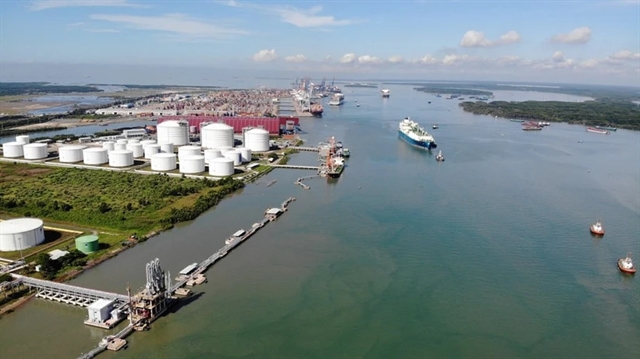The Vietnamese Government has reduced the preferential import tariff on liquefied natural gas (LNG), marking a key step in accelerating the country’s shift from fossil fuels to cleaner energy.

HÀ NỘI — The Vietnamese Government has reduced the preferential import tariff on liquefied natural gas (LNG) from 5 per cent to 2 per cent under Decree No. 73/2025/NĐ-CP, issued on March 31. The move marks a key step in accelerating the country’s shift from fossil fuels to cleaner energy.
Boost for LNG investors
Nguyễn Quốc Thập, Chairman of the Việt Nam Petroleum Association, said the lower tariff would provide strong incentives for investors in the LNG value chain, from importers like PV GAS to power producers such as PV Power and end users.
The decision also signals the Government’s intent to refine energy policy by balancing the interests of the State, investors and consumers. A more investor-friendly framework is expected to encourage development of LNG infrastructure, including terminals, storage, regasification facilities and LNG-fuelled power plants.
Under Power Development Plan VIII, Việt Nam aims to build 23 gas-fired power projects by 2030, of which 10 using domestic gas, with total capacity of 7,900 MW and 13 relying on imported LNG with a combined capacity of 22,400 MW.
These projects will play a vital role in increasing national power supply and advancing Việt Nam’s 2050 net-zero emissions target. The Nhơn Trạch 3 Power Plant, the first LNG-to-power plant using imported gas, was connected to the national grid in February and is set to begin commercial operations in July.
Developed by PV Power, a Petrovietnam subsidiary, its workload saw 96 per cent completed along with the Nhơn Trạch 4 plant. Both are expected to be fully operational in 2025. To ensure a stable, long-term fuel supply, PV GAS and PV Power have signed a 25-year LNG supply agreement for the Nhơn Trạch 3 and 4 plants.
As domestic gas reserves decline, PV GAS, currently Việt Nam’s only long-term LNG supplier, is accelerating investment in import terminals to maintain supply for both electricity generation and industry. The tariff cut is expected to help lower input costs for LNG power and benefit consumers.
Policy gaps remain
While the tariff reduction is a welcome step, more comprehensive reforms are needed, said Thập. A unified regulatory framework covering investment, infrastructure, imports, and LNG trading is essential to achieve national energy security and long-term sustainability goals.
Echoing this, a PV GAS representative pointed to persistent policy challenges, such as the absence of a guaranteed purchase volume, unclear rules for passing LNG prices through to electricity prices, and vague cost regulations.
These hurdles complicate project planning, output pricing, and commercial negotiations throughout the LNG value chain.
PV Power also highlighted difficulties in accessing international financing, as imported LNG remains a new investment model in Việt Nam.
To secure foreign loans, projects typically need minimum purchase guarantees (70-80 per cent), a price pass-through mechanism similar to that for domestic gas, and clear access to land and transmission infrastructure.
Petrovietnam also stressed that LNG-to-power should not be treated like traditional power sources in the competitive electricity market, as long-term LNG contracts are needed to ensure stable supply and reduce costs.
Legal reforms to support energy transition
To advance clean energy goals, the Việt Nam Petroleum Association has called for revisions to a wide range of laws, including those on electricity, environmental protection (especially carbon emissions accounting), taxation, marine resources, investment, procurement, construction and land.
It also recommends aligning electricity market development with Power Development Plan VIII, building integrated LNG infrastructure clusters (terminals, power plants and industrial zones), and expanding transmission networks for both domestic use and export, particularly for LNG-based power.
The association further urged updates to the organisational and financial regulations for state-owned energy firms, such as Petrovietnam and EVN. — VNS





